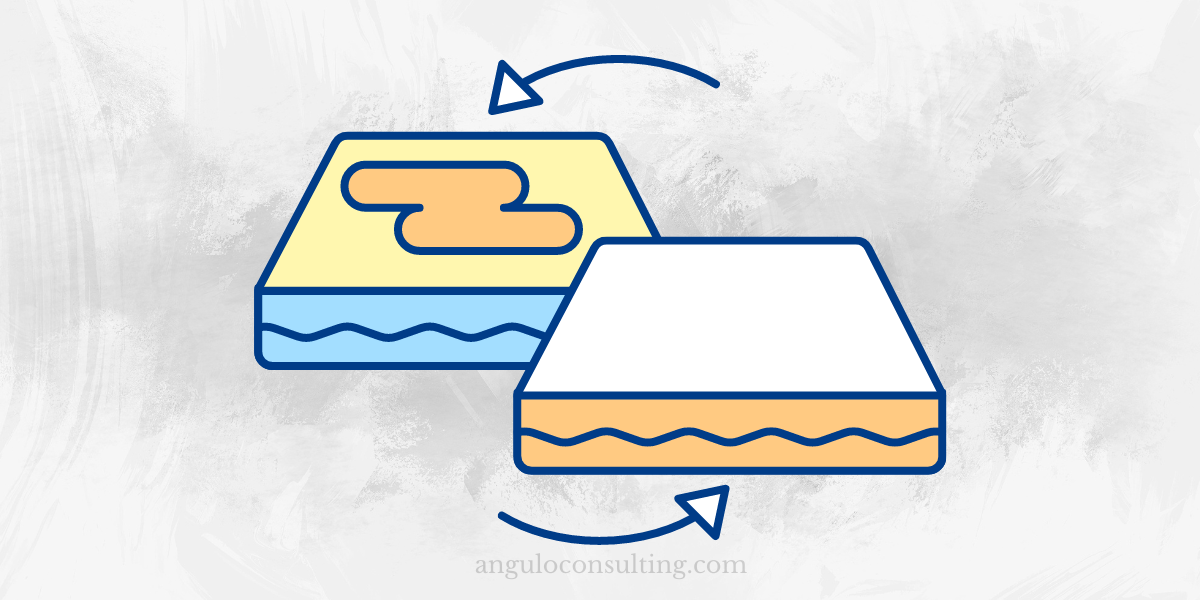
Many people are not aware of how to maintain their mattresses and may often end up damaging them if they use the wrong cleaning methods. Below are common mistakes to avoid when cleaning the mattress:
What do you need to avoid while cleaning your mattress?
Avoid wetting your mattress.
When spillage occurs on your mattress, the common tendency is to wash the mattress upholstery using water and soap to remove stains. Warning against cleaning mattresses using moisture has been published by many mattress manufacturers as wetting it can potentially damage the mattress upholstery.
Cleaning by using a beater
Many generations ago, people became aware that mattress contains a lot of dust and bugs, so it was common for our parents and grandparents to practice cleaning them by beating and sunning them mattress in their earlier years. Perhaps this practice can still be observed in some countries or homes whose mattresses are light, and there is sufficient space for the mattress to be sunned.
Contrary to traditional mattress cleaning beliefs, beating the mattress is not an effective way to remove dust particles. In fact, this housekeeping practice can be a hazardous method that may trigger allergic reactions in those who inhale the dust and house dust mites that are bellowed into the air when the mattress is beaten. Instead of removing dirt and dust particles permanently from the mattress, beating it is simply throwing the microorganism and dirt particles into the air, and while the mattress is being sunned, some of the dirt particles would settle back into the mattress or other parts of the home.
Washing of bed linens and mattress protector weekly is enough.
As the bed linen and mattress protector used to cover the mattress are regularly washed during a regular housekeeping schedule, it is not surprising for owners to think that their mattress is clean and do not see a need for in-depth mattress cleaning unless the mattress has been stained. Contrary to most beliefs, the mattress is like a giant sponge that collects high amounts of dirt particles like dust, dead skin flakes, millions of dust mites and other microorganisms. These dirt particles are trapped within the mattress, making it the dirtiest.
In fact, these unseen particles and microorganisms have the potential to cause more mattress hygiene problems than stains on the mattress. Allergic sufferers who are sensitive to dust and house dust mites may find themselves waking up with a runny nose, repeated sneezes, or itchy eyes when sleeping on a dirty mattress. These are common symptoms that may lead to rhinitis, asthma, and eczema. Even for a healthy person, sleeping on a dirty mattress should be avoided as breathing in the airborne dirt particles and microorganisms in the mattress every night definitely does not promise good health.
Using any type of vacuum cleaner to clean
There are many types of vacuum cleaners that are marketed for cleaning mattresses and even killing dust mites. There are cheap ones, and some are expensive ones. Some are big and heavy, while some machines are small and light, like a toy but promise to perform many functions.
Multi-purpose vacuum cleaners sold in the market are designed to perform multi-cleaning tasks, i.e., vacuuming the floor, ceiling, sofa, etc. Unlike a professional mattress cleaning system, a multi-purpose vacuum machine is not specially designed and manufactured with a particular essential performance function. Thus, a multi-purpose vacuum cleaner can perform a satisfactory job for general cleaning of the floor, soft furnishings, and ceilings, but not sufficient to perform a thorough cleaning of dust, dirt particles and microorganisms that are deeply embedded inside the thick mattress.
Steam Cleaning is Dry
Steam cleaners are good tools to help remove grease and stubborn stains on a hard surfaces like tiles in toilets, kitchens, outdoor floorings, etc. To add more functionality to this machine, steam cleaners have been marketed as a disinfectant to kill bacteria because of the steam’s high temperature.
While steam cleaners can definitely kill bacteria on any surface the steam land on, steam is not recommended to kill bacteria on soft fabric furnishings like a mattress and fabric sofa because the moisture from the steam may encourage infestation of mold and mildew in the upholstery’s foam. As warned by many mattress manufacturers, cleaning a mattress using moisture may damage the mattress making the mattress less comfortable to sleep on.